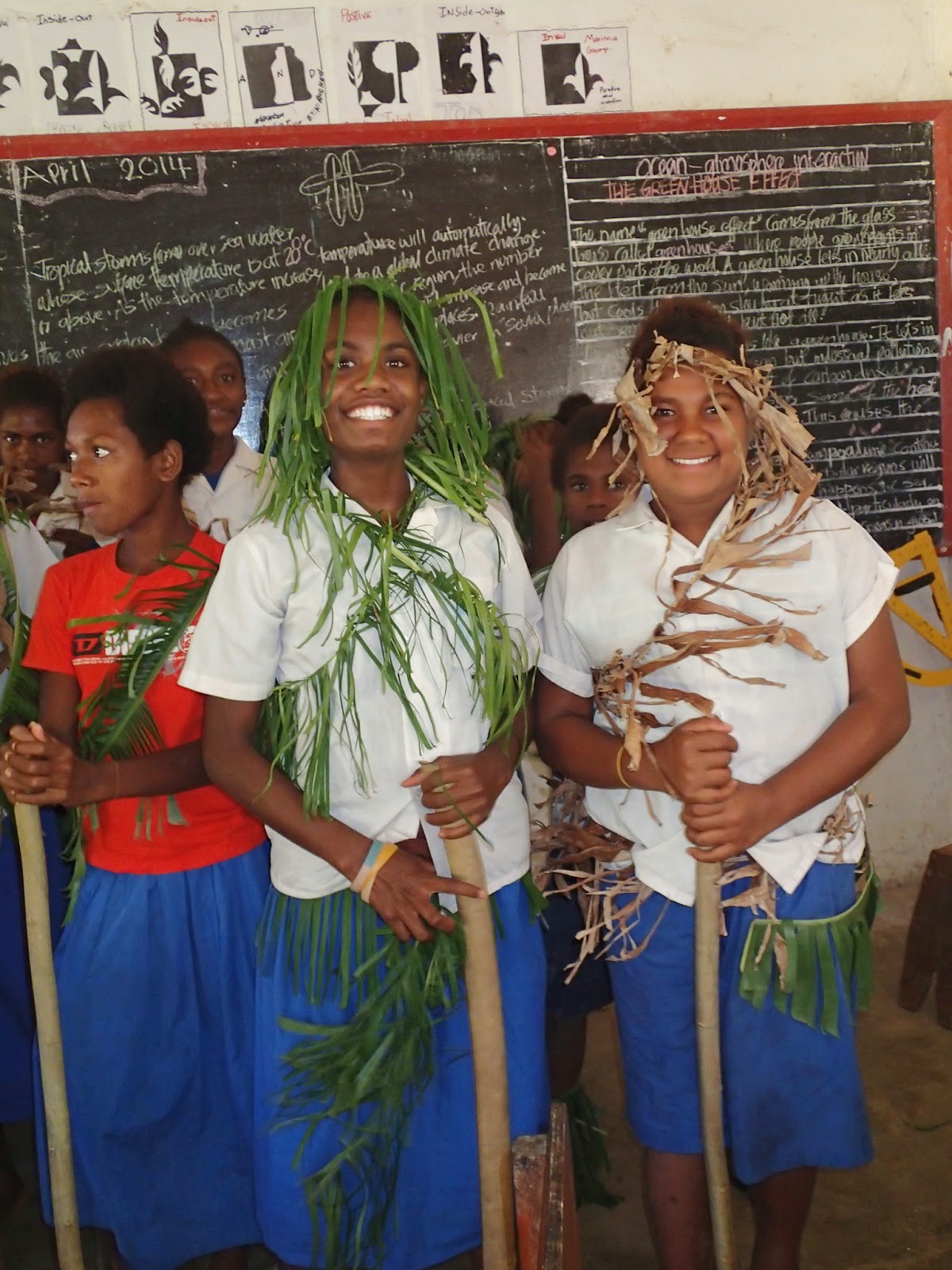One of Class 6's units is about kastom. They read stories about kastoms from other islands and they're encouraged to explore their own kastom.
I would say that Tongariki is not a kastom island but that people still practice their kastom. We do do some kastom dancing and there's still kastom for weddings, deads, new babies, and so on, but without some of the other taboos that are common in different parts of Vanuatu. (Woman Atong drinks kava and can cook while she's on her period, for example. Also while it's respectful to call everyone Mami, Uncle, Tawi, you can use their names. In some places, certain relationships have taboos, such that instead of talking about Auntie Lewi or Mama Dora, you talk about Auntie Santo and Mami Pis Kops.)
At my school, I would say they do a good job of teaching the kids their kastom. They do a kastom show every year and they practice doing cultural activities about one afternoon a month, more around the time of the show. The kids on Tongariki know how to make mats, how to do basic carvings, and they know their dances.
[Rinnie and Ryana]
Obviously, this isn't normal kastom wear ... but on Tongariki, from what I've seen, this part is pretty legitimate. Last year during Independence, everyone who was dancing put bunches of leaves around themselves and we were painting ourselves with chalk and ashes from the fire. I think it's more just to make style, really--because like I said, we're not kastom like that so in a sense, it is like putting on a costume.




No comments:
Post a Comment